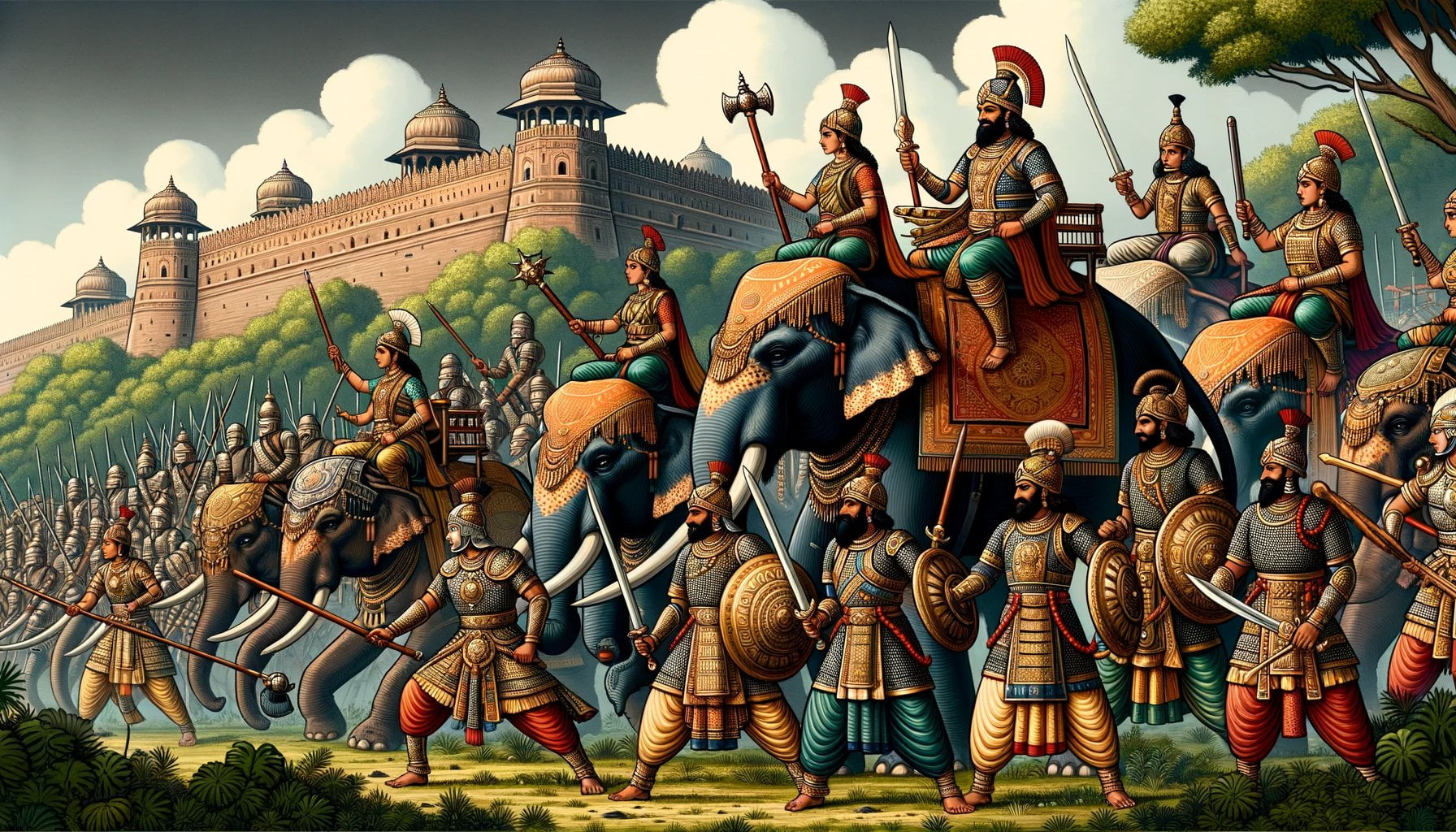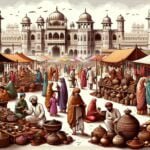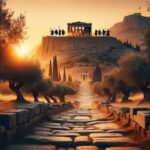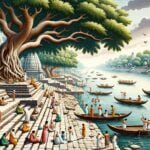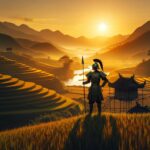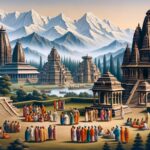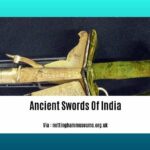Unveiling the Ancient Warriors of India: A Fascinating Journey takes readers on a captivating expedition into the gallant world of India’s ancient warriors. This article, written by a seasoned historian and cultural researcher, delves deep into the legacy of these extraordinary warriors who once dominated the battlefields of the Indian subcontinent. From the valiant Rajputs to the mighty Marathas, the article uncovers their tales of bravery, military mastery, and the historical context that shaped their martial traditions. With a meticulous blend of meticulous research and enthralling storytelling, this article offers a remarkable glimpse into India’s rich warrior heritage.
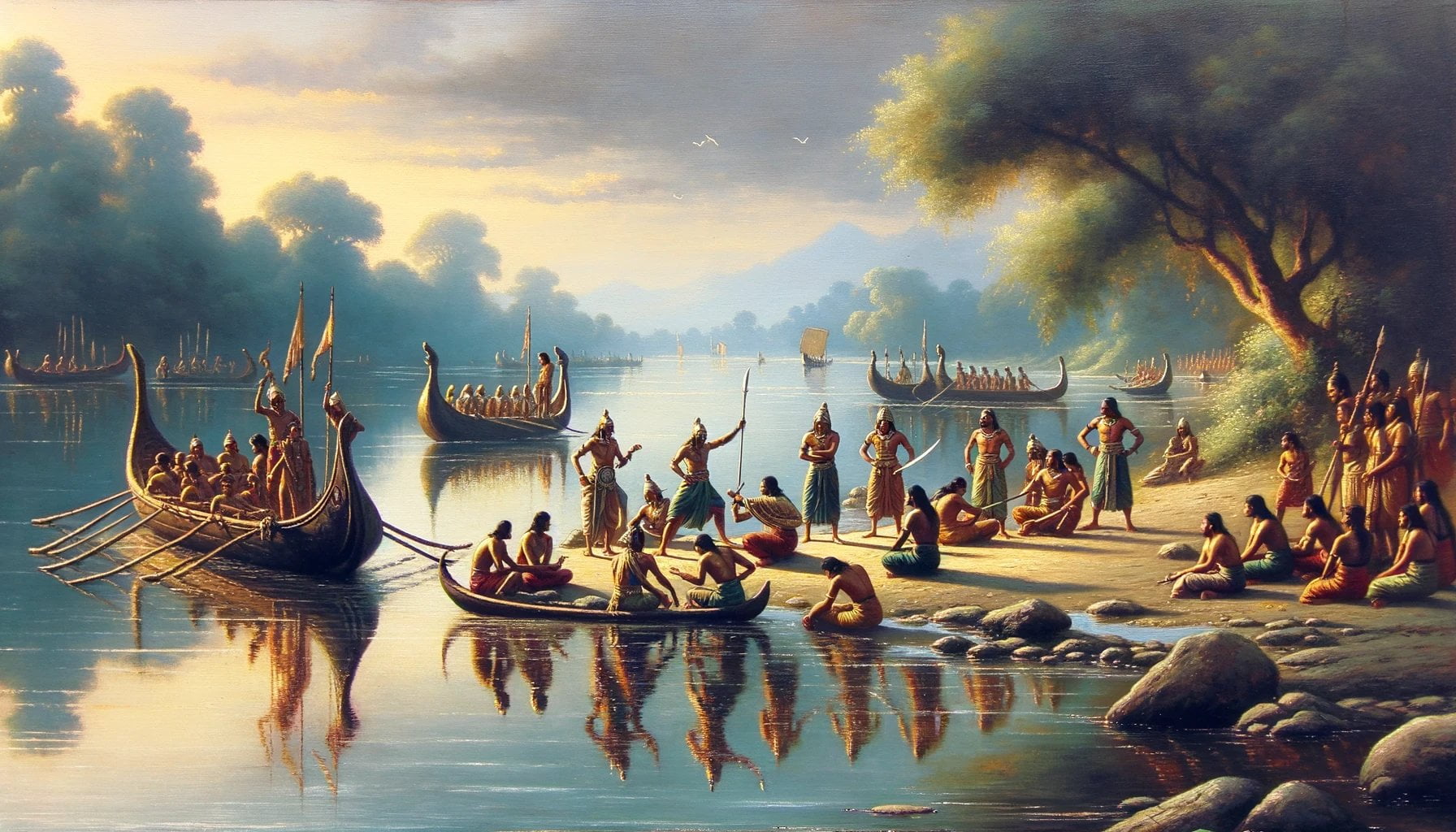
Key Takeaways:
- Emperor Ashoka, of the Maurya dynasty, is known for building Ashoka Pillars and spreading Buddhism throughout his empire.
- Chandragupta Maurya, the founder of the Maurya dynasty, ruled over a vast empire and was known for his military conquests.
- Prithviraj Chauhan, a Rajput king, valiantly defended his kingdom against the invasions of Muhammad Ghori.
- Maharana Pratap, a Rajput king, resisted the Mughal empire and fought against the forces of Emperor Akbar, symbolizing Rajput valor and bravery.
- Chatrapati Shivaji Maharaj, founder of the Maratha Empire, utilized military tactics and guerrilla warfare against the Mughal Empire.
- Chandragupta II Vikramaditya, a Gupta emperor, expanded his empire through military conquests while patronizing art, literature, and science.
- Akbar, the third Mughal emperor, is known for his military campaigns and administrative reforms, including establishing religious tolerance in his empire.
- Rani Lakshmi Bai, the Queen of Jhansi, fought against the British East India Company during the Indian Rebellion of 1857, exhibiting immense bravery.
- Ajatasatru, a Haryanka emperor, was known for his military conquests and expansion of the Magadha kingdom.
- Samudragupta, a Gupta emperor, earned the title “Napoleon of India” due to his military brilliance and successful conquests.
Ancient Indian Warfare:
- Soldiers comprising a company were called Gaulmika.
- Mahamatras ran the war department in the Magadha kingdom.
- Forts played a crucial role in ancient Indian warfare.
Religion of Warriors:
- Warriors belonged to various religions like Buddhism, Hinduism, and Sikhism.
- Emperor Ashoka promoted Buddhism, while Rajput warriors followed Hinduism.
- Akbar practiced a syncretic religion called Din-i-Ilahi.
Battle Tactics and Weapons:
- Warriors employed various tactics such as infantry, cavalry, chariots, and elephants.
- Primary weapons included bows and arrows, swords, shields, spears, lances, axes, pikes, clubs, and maces.
Sources:
1. ScrollDroll: 10 Greatest Warriors in Indian History You Should Know About!
2. History Answers: India’s 10 greatest warrior Emperors and Kings
Ancient Warriors of India
India’s rich history is adorned with tales of valor, courage, and indomitable spirit exhibited by its ancient warriors. From Emperor Ashoka, who united the Maurya dynasty and spread Buddhism, to brave Rajput kings like Prithviraj Chauhan and Maharana Pratap, who defended their kingdoms against invaders, these warriors left an indelible mark on Indian history.
Emperor Ashoka: The Enlightened Warrior
One cannot delve into the realm of ancient Indian warriors without paying homage to Emperor Ashoka, who is revered as one of the greatest rulers in Indian history. Known as Chakravarti Samrat Ashoka, he was a Mauryan emperor and the grandson of Chandragupta Maurya. Ashoka’s military conquests expanded the Mauryan empire to its zenith, but it was his transformation after the Kalinga War that truly set him apart. Inspired by the horrors of war, he embraced Buddhism and devoted himself to spreading its teachings throughout his empire.
Chandragupta Maurya: The Founding Father
Chandragupta Maurya, the founder of the Maurya dynasty, laid the foundation for the great empire that would later be ruled by his grandson, Ashoka. Not only did he possess immense military prowess, but he also displayed exceptional administrative skills. His rule over a vast empire and his successful military conquests cemented his place in history as a legendary warrior.
Prithviraj Chauhan: The Rajput Lionheart
In the annals of Rajput history, the name Prithviraj Chauhan reverberates with tales of bravery and chivalry. Ruling over the kingdom of Ajmer and Delhi, Prithviraj Chauhan displayed unwavering valor and resilience in the face of Muhammad Ghori’s invasions. His valiant efforts to defend his kingdom have earned him a place of honor among India’s ancient warriors.
Maharana Pratap: The Symbol of Rajput Valor
Maharana Pratap, another iconic Rajput king, stood tall against the mighty Mughal Empire, led by Emperor Akbar. He valiantly fought to protect his people and their way of life. Maharana Pratap’s unwavering determination and refusal to submit to the Mughals have immortalized him as a symbol of Rajput valor and bravery.
Chatrapati Shivaji Maharaj: The Maratha Maverick
Shivaji Maharaj’s name resounds as the founder of the Maratha Empire in western India. His military tactics and guerrilla warfare techniques against the Mughal Empire astounded both his allies and adversaries. Shivaji Maharaj’s unwavering spirit and profound love for his land and people have forever engraved his name in the annals of Indian history.
Chandragupta II Vikramaditya: The Visionary Ruler
Chandragupta II of the Gupta dynasty was not only a skillful warrior but also a patron of art, literature, and science. His military campaigns and successful conquests expanded the Gupta empire to unprecedented heights. Known for his astute administration and support for intellectual pursuits, Chandragupta II Vikramaditya is a testament to the synergy of military prowess and cultural achievements in ancient India.
Akbar: The Architect of Harmony
Akbar, the third Mughal Emperor, is renowned for his military campaigns and administrative reforms. He established a centralized administration and fostered religious tolerance in his empire, giving birth to a syncretic religion called Din-i-Ilahi. Akbar’s reign witnessed the fusion of diverse cultural and religious influences, leaving a lasting impact on the socio-political fabric of India.
Rani Lakshmi Bai: The Warrior Queen
Rani Lakshmi Bai, the Queen of Jhansi, stands as a beacon of courage and resistance. She valiantly fought against the British East India Company during the Indian Rebellion of 1857. Rani Lakshmi Bai’s unwavering spirit and determination to safeguard her kingdom have made her an iconic figure in the Indian freedom struggle.
Ajatasatru: The Warrior King
Ajatasatru, a Haryanka emperor, was renowned for his military conquests and the expansion of the Magadha kingdom. His strategic brilliance and military prowess earned him the reputation of a powerful warrior king during his time.
Samudragupta: The Napoleon of India
Samudragupta, a Gupta emperor, is often referred to as the “Napoleon of India” due to his military brilliance. His military campaigns and successful conquests expanded the Gupta empire to its zenith, ushering in a golden age of art, culture, and trade.
Ancient Indian Warfare played a crucial role in shaping the destiny of kingdoms and empires. Soldiers, known as Gaulmika, fought using various tactics, including infantry, cavalry, chariots, and even elephants. Forts held a key position in ancient Indian warfare, serving as strategic strongholds.
Religion played a significant role in the lives of ancient Indian warriors. While Emperor Ashoka promoted Buddhism, Rajput warriors staunchly adhered to Hinduism. Akbar, known for his religious tolerance, practiced a syncretic religion called Din-i-Ilahi.
The warriors wielded a formidable arsenal of weapons that included bows and arrows, swords, shields, spears, lances, axes, pikes, clubs, and maces. These weapons, coupled with their indomitable spirit, enabled ancient Indian warriors to face formidable foes and emerge victorious.
Unveiling the stories of ancient warriors of India takes us on a fascinating journey through time. These legendary figures, with their unparalleled valor and unwavering dedication, have left an indelible mark on India’s history and continue to inspire generations.
- Government Ancient India: Explore the fascinating world of governance in ancient India, where rulers and officials played vital roles in shaping the society and maintaining peace and order.
- Economics in Ancient India: Delve into the economic system of ancient India, where trade and agricultural practices thrived, contributing to the prosperity and growth of the civilization.
- Ancient India Achievements: Discover the remarkable achievements made by the ancient Indians in various fields such as science, mathematics, architecture, and literature, leaving a lasting legacy that continues to inspire us today.
- Politics Ancient India: Uncover the intriguing world of ancient Indian politics, where power struggles, diplomacy, and alliances shaped the course of history and influenced the lives of the people.
Description of Renowned Ancient Battles Fought by Indian Warriors
Ancient Indian warfare was a captivating tapestry of valor, strategy, and civilization shaping battles. These battles witnessed the might and brilliance of Indian warriors, leaving an indelible mark on history. Let’s dive into the details of a few renowned ancient battles fought by Indian warriors.
The Battle of Kalinga: A Turning Point in Indian History
One pivotal battle that shaped the destiny of India was the Battle of Kalinga. Fought between Emperor Ashoka of the Mauryan Empire and the ruler of Kalinga, it was an epic clash that forever changed Ashoka’s path. This battle, known for its brutality, unfolded in the 3rd century BCE.
Emperor Ashoka sought to conquer Kalinga for its strategic location and resources. Little did he anticipate the profound impact this battle would have on his life and the course of history. The sheer scale of the conflict and the immense loss of life left Ashoka deeply moved by the horrors of war.
The aftermath of the Battle of Kalinga prompted Ashoka to embrace Buddhism, renouncing violence and adopting a path of peace and compassion. This transformative experience led to Ashoka’s conversion into a true patron of Dharma, letting his principles guide his reign and legacy.
The Battle of Tarain: A Clash of Empires
Another remarkable battle fought by Indian warriors was the Battle of Tarain. This fierce confrontation took place in the 12th century CE between the forces of Prithviraj Chauhan, the Rajput king of Delhi, and Muhammad Ghori, the Ghurid Sultans of Afghanistan.
The Battle of Tarain witnessed the might of Prithviraj Chauhan as he valiantly defended his kingdom against Muhammad Ghori’s invasions. Prithviraj and his renowned cavalry displayed exemplary valor and tactical brilliance.
However, the outcome of this battle took a tragic turn, resulting in Prithviraj’s defeat and eventual capture. Despite this setback, Prithviraj’s legacy as a fearless warrior and a symbol of resistance against foreign invaders endures to this day.
Key Takeaways:
- The Battle of Kalinga was a pivotal moment in Indian history, prompting Emperor Ashoka’s embrace of Buddhism and peaceful principles.
- The Battle of Tarain showcased the valor and tactical prowess of Prithviraj Chauhan, a revered Rajput king who defended his kingdom against foreign invasions.
Sources:
– Ancient Indian Warfare – World History Encyclopedia
– The Art of Indian Warfare: From the Indus Valley to the Chola Empire – Ancient Origins
Analysis of weaponry and fighting techniques utilized by ancient Indian warriors
Ancient Indian warfare was not only a means of conquest but also a reflection of the cultural and societal values of that time. Warriors were revered for their skills and bravery, and the use of various weapons and fighting techniques played a vital role in battles. Let’s dive deeper into the analysis of weaponry and fighting techniques utilized by these ancient Indian warriors.
Weapons:
The ancient Indian warriors had a vast array of weapons at their disposal. Bows and arrows were the primary weapons, providing versatility and efficacy at both short and long ranges. These bows, known as dhanush, were often made of strong materials such as bamboo or metal (World History Encyclopedia).
In addition to bows and arrows, ancient Indian warriors wielded swords, shields, spears, javelins, lances, axes, pikes, clubs, and maces. Each weapon had a specific purpose and was used strategically based on the battlefield situation. These weapons were crafted with precision, ensuring they were effective in close-quarters combat (World History Encyclopedia).
Fighting Techniques:
The ancient Indian warriors employed various fighting techniques that showcased their expertise and tactical brilliance on the battlefield. The army was divided into four arms called chaturanga: infantry, cavalry, chariots, and elephants (World History Encyclopedia). This division allowed for a well-rounded approach to combat.
Infantry troops formed the backbone of the ancient Indian army. They engaged in merciless attacks, bearing the brunt of the fight. The infantry played a crucial role in close-quarters combat, using their weapons to strike fear into the hearts of their enemies (World History Encyclopedia).
Cavalry units served as fast-moving forces, attacking swiftly and evading counterattacks. They were skilled horse riders, using their speed and maneuverability to gain an advantage over their opponents (World History Encyclopedia).
Chariots were another formidable force deployed by ancient Indian warriors. These chariots, equipped with weapons such as bows and javelins, enabled warriors to navigate the battlefield swiftly while also providing a vantage point for archers to rain down arrows upon their foes (World History Encyclopedia).
Elephants were a key component of ancient Indian warfare, serving both as a means of transportation and as a powerful weapon. These majestic creatures were armored and trained to wreak havoc on the battlefield, trampling enemies and scattering opposing forces (World History Encyclopedia).
Key Takeaways:
- Ancient Indian warriors utilized a diverse range of weapons, including bows and arrows, swords, shields, spears, javelins, lances, axes, pikes, clubs, and maces.
- The ancient Indian army consisted of infantry, cavalry, chariots, and elephants, each playing a vital role in battle.
- Infantry troops formed the primary fighting force and engaged in close-quarters combat.
- Cavalry units were swift and used their speed to gain advantages.
- Chariots provided both mobility and firepower on the battlefield.
- Elephants were used as powerful weapons, trampling enemies and creating chaos.
- The combination of these weapons and fighting techniques allowed ancient Indian warriors to conquer foes and shape history (World History Encyclopedia).
Research Sources:
- World History Encyclopedia – Ancient Indian Warfare
- Ancient Origins – The Art of Indian Warfare: From the Indus Valley to the Chola Empire
Unveiling the Ancient Warriors of India: A Fascinating Journey
Throughout the rich tapestry of Indian history, a captivating story unfolds – a story of brave warriors who left an indelible mark on the annals of time. In this article, we embark on a mesmerizing exploration of the impact and legacy of ancient Indian warriors in Indian history.
The Battle of Kalinga: From Violence to Peaceful Awakening
One of the pivotal moments in Indian history is the Battle of Kalinga, fought in the 3rd century BCE. Emperor Ashoka of the Mauryan Empire faced off against the ruler of Kalinga in a fierce conflict that would shape the destiny of both individuals and the nation as a whole. The magnitude of the battle’s brutality moved Ashoka to the core, prompting him to embrace Buddhism and renounce violence. This transformative event not only changed the course of Ashoka’s life but also had a profound impact on the spread of Buddhism and the pursuit of peace in ancient India.
Key Takeaways:
– The Battle of Kalinga played a pivotal role in Emperor Ashoka’s conversion to Buddhism.
– Ashoka’s embrace of Buddhism had far-reaching consequences for the future of India and the spread of Dharma.
The Battle of Tarain: Valor and Resistance Against Invaders
Another legendary battle that resonates through the ages is the Battle of Tarain, which took place in the 12th century CE. Prithviraj Chauhan, the Rajput king of Delhi, and Muhammad Ghori, the Ghurid Sultans of Afghanistan, clashed in an epic struggle for power and dominance. Prithviraj displayed unmatched valor and tactical brilliance, becoming a symbol of resistance against foreign invaders. Although ultimately captured and defeated, Prithviraj’s legacy endures as a shining example of courage and resilience.
Key Takeaways:
– The Battle of Tarain showcased Prithviraj Chauhan’s courage as a warrior and his unwavering resistance against foreign invaders.
– Prithviraj’s legacy as a symbol of valor and resilience continues to inspire future generations.
Weapons, Tactics, and the Four Arms of the Ancient Indian Army
In their quest for victory, ancient Indian warriors utilized a wide array of weapons and ingenious tactics. Bows and arrows, swords, shields, spears, javelins, lances, axes, pikes, clubs, and maces formed the arsenal of these formidable warriors.
The ancient Indian army comprised four arms: infantry, cavalry, chariots, and elephants. The infantry troops, serving as the primary fighting force, engaged in close-quarters combat. Swift and agile cavalry units used their speed and mobility to gain strategic advantages on the battlefield.
Chariots, with their mobility and firepower, provided a crucial advantage for ancient Indian armies. Furthermore, elephants emerged as powerful weapons, capable of trampling enemies and creating chaos. The combined strength of these four arms allowed ancient Indian warriors to conquer formidable foes and forge their place in history.
Key Takeaways:
– Ancient Indian warriors wielded a vast array of weapons, ranging from bows and arrows to swords, shields, and spears.
– The four arms of the ancient Indian army – infantry, cavalry, chariots, and elephants – each played a critical role in achieving victory on the battlefield.
A Lasting Legacy: Paving the Way for Martial Arts and Culture
The impact and legacy of ancient Indian warriors extend far beyond the battlefields of bygone eras. Their indomitable spirit and martial prowess continue to inspire and shape Indian culture, even today. The fighting techniques and weaponry perfected by these warriors serve as the foundation for various forms of martial arts practiced in India.
Moreover, the socio-political context surrounding ancient battles helped shape the development of art, literature, and society. The influence of Brahmanism (Hinduism), Jainism, and Buddhism can be seen in the cultural fabric of ancient India. These ancient warriors, with their triumphs and struggles, add layers of depth and richness to the captivating story of India’s history.
Key Takeaways:
– Ancient Indian warriors have left an enduring legacy that continues to inspire future generations and contribute to the development of Indian martial arts and culture.
– The influence of these warriors can be seen in various aspects of Indian society, from art and literature to religion and philosophy.
Conclusion
As we delve into the remarkable stories of ancient Indian warriors, a fascinating journey unfolds. From the Battle of Kalinga that transformed a violent emperor to the Battle of Tarain that epitomized resistance against invaders, these warriors etched their names in the annals of Indian history. With their bravery, military tactics, and the legacy they left behind, these warriors continue to captivate our imagination and serve as a testament to the enduring spirit of India.
Key Takeaways:
– Ancient Indian warriors embody the spirit of valor, determination, and resilience.
– Their stories and legacies serve as a reminder of the richness and diversity of India’s historical tapestry.
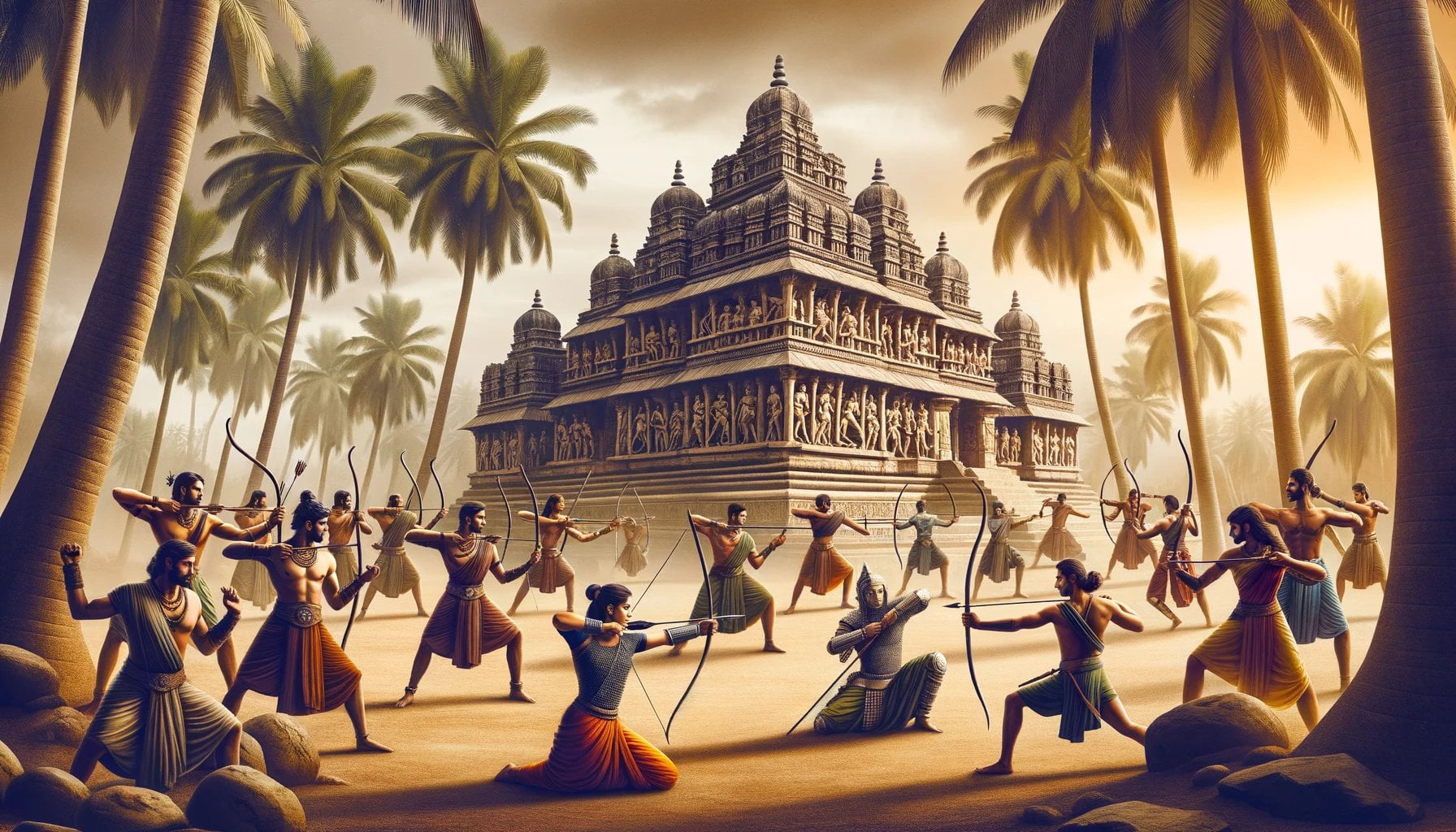
FAQ
Q1: Who were some of the greatest ancient warriors in India?
A1: Some of the greatest ancient warriors in India include Emperor Ashoka, Chandragupta Maurya, Prithviraj Chauhan, Maharana Pratap, Chatrapati Shivaji Maharaj, Chandragupta II Vikramaditya, Akbar, Rani Lakshmi Bai, Ajatasatru, and Samudragupta.
Q2: What weapons did ancient Indian warriors use?
A2: Ancient Indian warriors used a variety of weapons including bows and arrows, swords, shields, spears, javelins, lances, axes, pikes, clubs, and maces.
Q3: What was the role of religion in ancient Indian warfare?
A3: Ancient Indian warriors belonged to various religions like Buddhism, Hinduism, and Sikhism. Emperor Ashoka promoted Buddhism, while the Rajput warriors followed Hinduism. Akbar practiced a syncretic religion called Din-i-Ilahi.
Q4: What were some battle tactics used in ancient Indian warfare?
A4: Ancient Indian warriors used various battle tactics including infantry, cavalry, chariots, and elephants. These tactics were adapted based on the circumstances of the battle.
Q5: How did ancient Indian warfare shape the culture and history of India?
A5: Ancient Indian warfare played a significant role in shaping the culture and history of India. The concept of a ruler as a skilled warrior influenced the attitudes and expectations of leaders. Battles such as the Battle of Kalinga had a lasting impact on Indian history and culture.
- Unveiling the Enigma: Mansoureh Khojasteh Bagherzadeh’s Public Appearances & Private Life in Iran - July 18, 2025
- Unveiling the Mystery: Mansoureh Khojasteh Bagherzadeh’s Husband: A Rare Glimpse into a Private Life - July 18, 2025
- Unveiling Masoud Khamenei’s Mother: Power, Influence, and Iran’s Future - July 18, 2025
